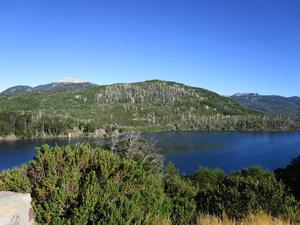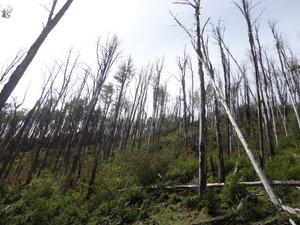Florencia Tiribelli
The aim of our project is to study the vegetation structural and compositional attributes that determine the flammability of Patagonian forests and shrublands.

Fire is one of the most frequent and extensive disturbance in Patagonia leading to biodiversity loss. Although fire frequently starts by natural causes, humans may also accidentally initiate fire or use it for landscape management purposes — shifting the natural fire regime. Moreover, climate change models show an increase in fires' severity and extent, given the increase in dry fuels due to rising temperatures and drought. Therefore, it is extremely important to prevent or early detect fire in order protect the ecosystem of burning.

Northwest Patagonia is a sparsely populated region with many remote areas, hence it is difficult to monitor exhaustively. In order to start creating an effective detection system and increase prevention we need information about the flammability of this ecosystems. Currently, more extreme fire events are threatening biodiversity and ecosystem integrity in Patagonia. However, little is known on how post fire communities feedback into future fire through different flammability patterns. The aim of our project is to understand how vegetation structure and composition changes with post fire age. With this information, we will better understand fire-vegetation feedbacks, allowing more informed fire management decisions and efficient fire prevention and monitoring in susceptible areas.
The study sites are located within the Nahuel Huapi National Park and Lanin National Park in the north western Patagonian region. Particularly we will focus on Nothofagus dombeyi forests and Nothofagus antarctica shrublands. In these two National Parks, we will study the vegetation's structural and compositional attributes determining flammability. This means measuring horizontal and vertical continuity of surface, aerial and canopy fuels. This study will increase the now insufficient knowledge about the flammability of Patagonian forests and shrublands.